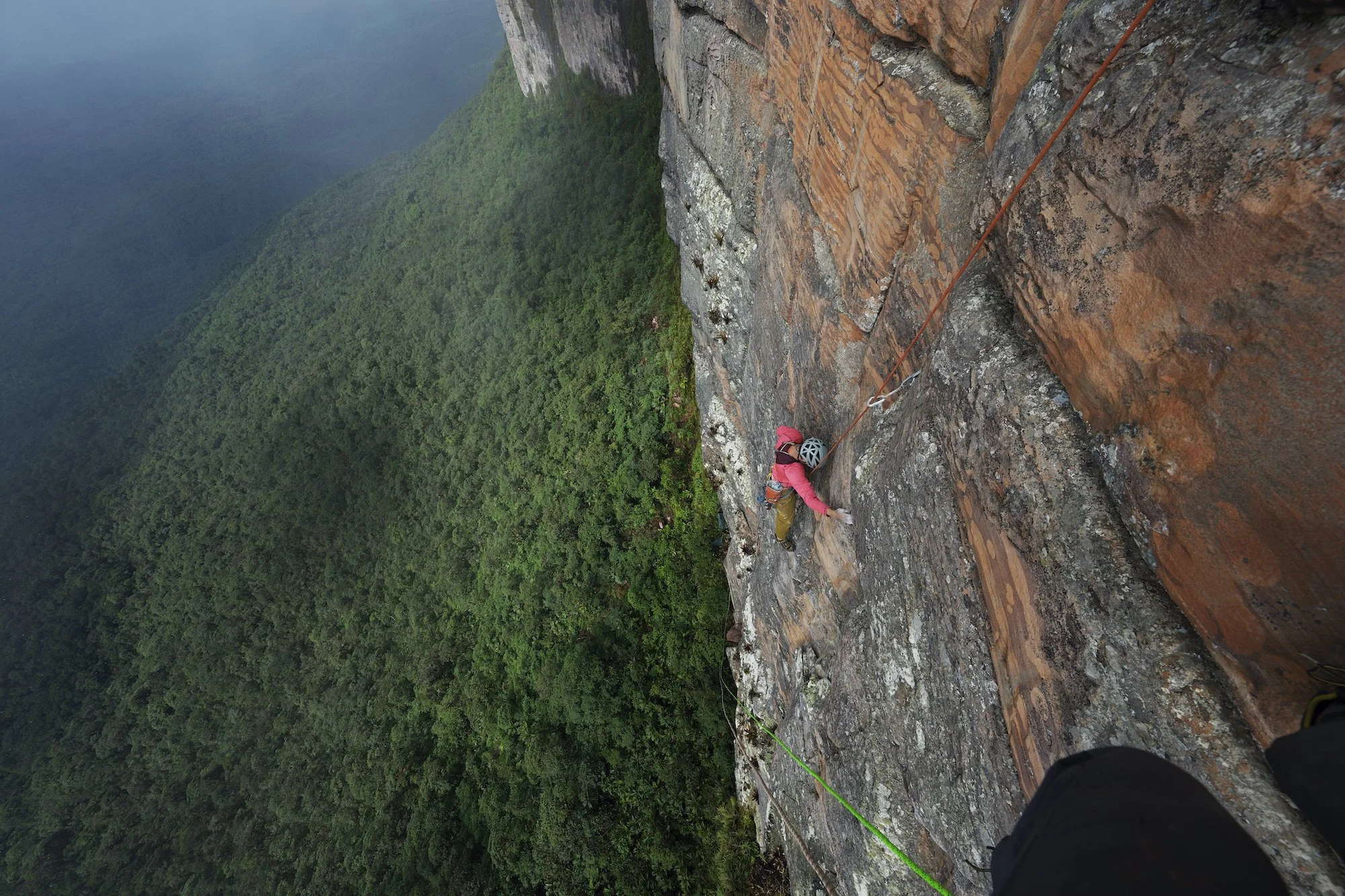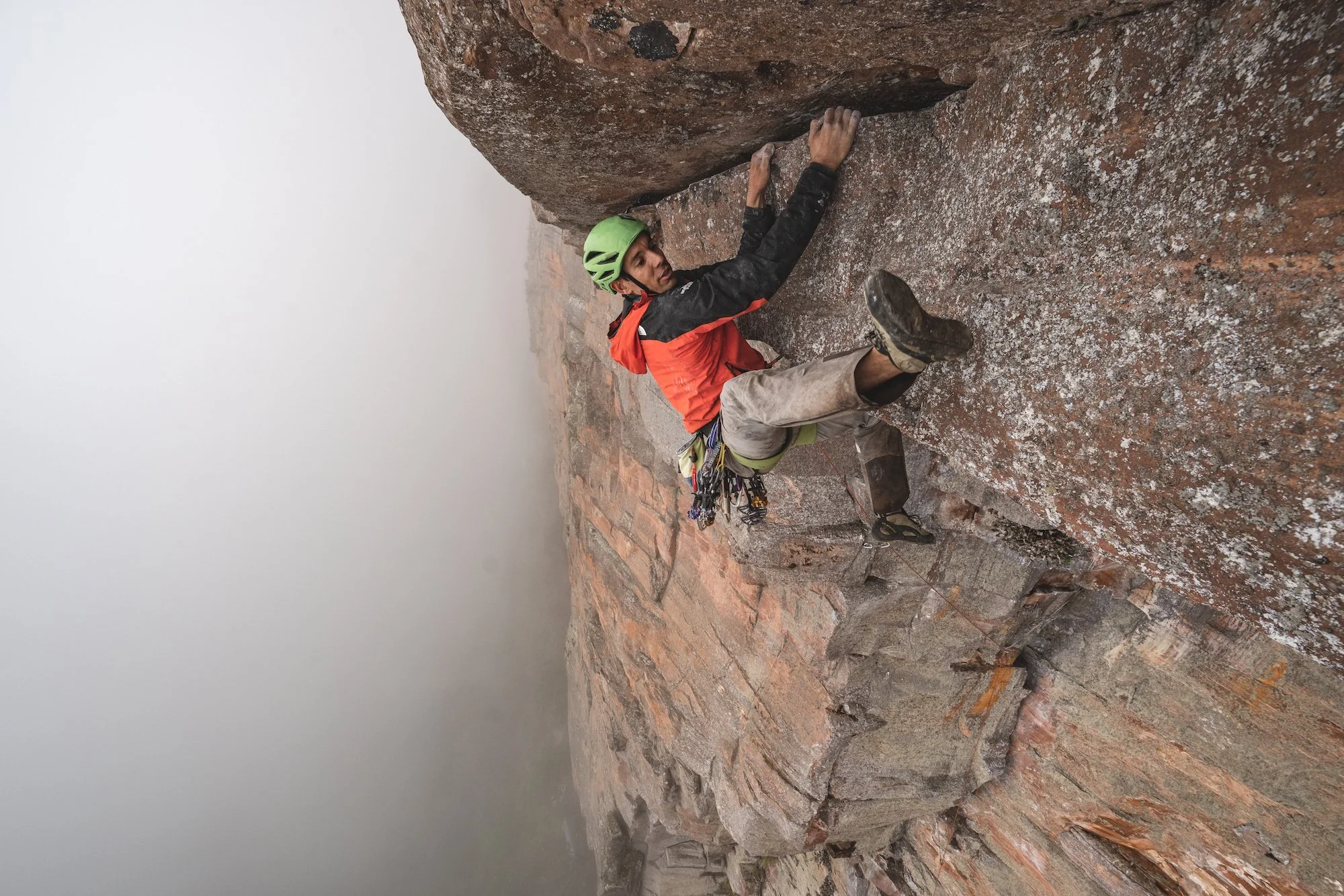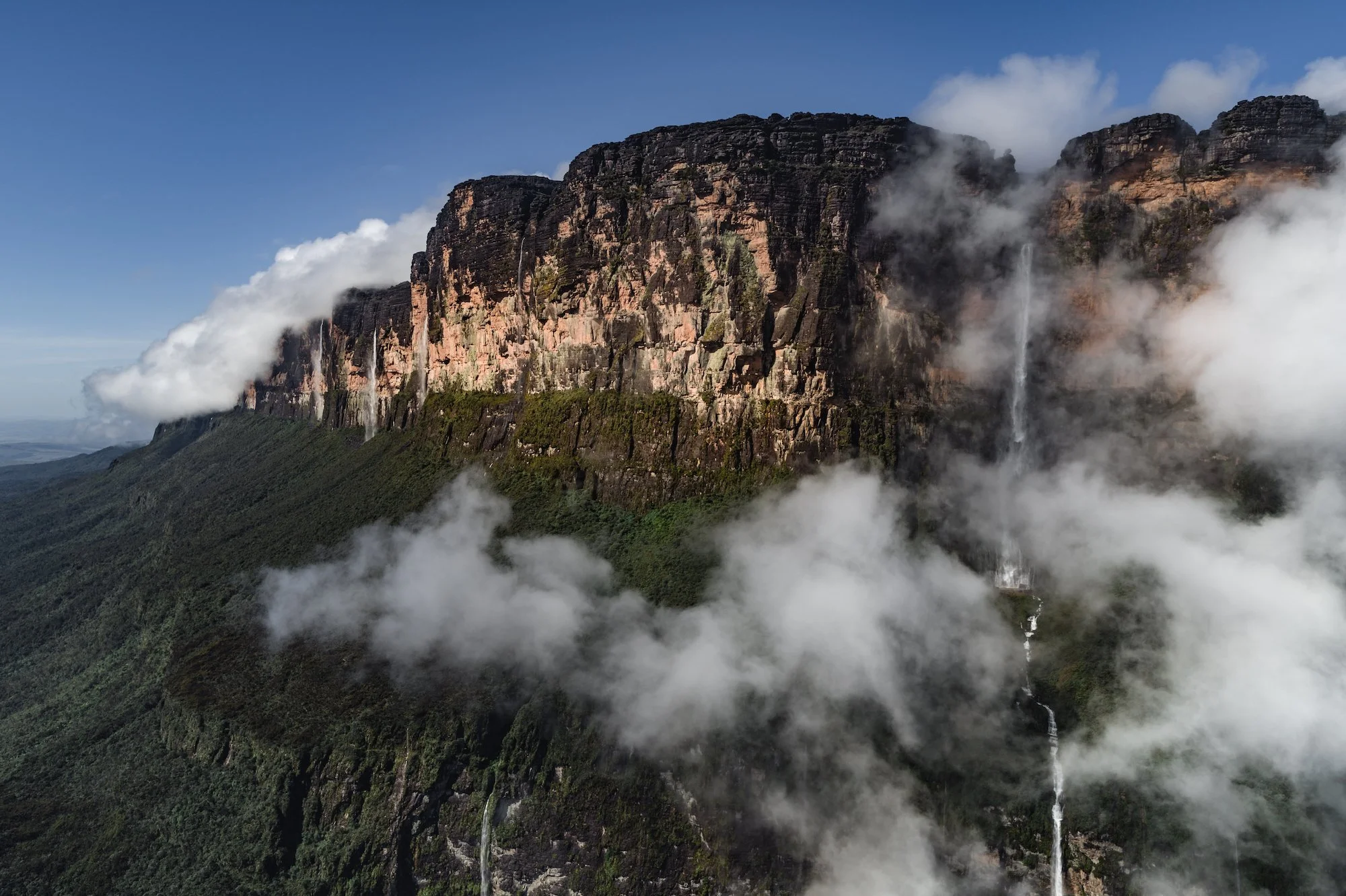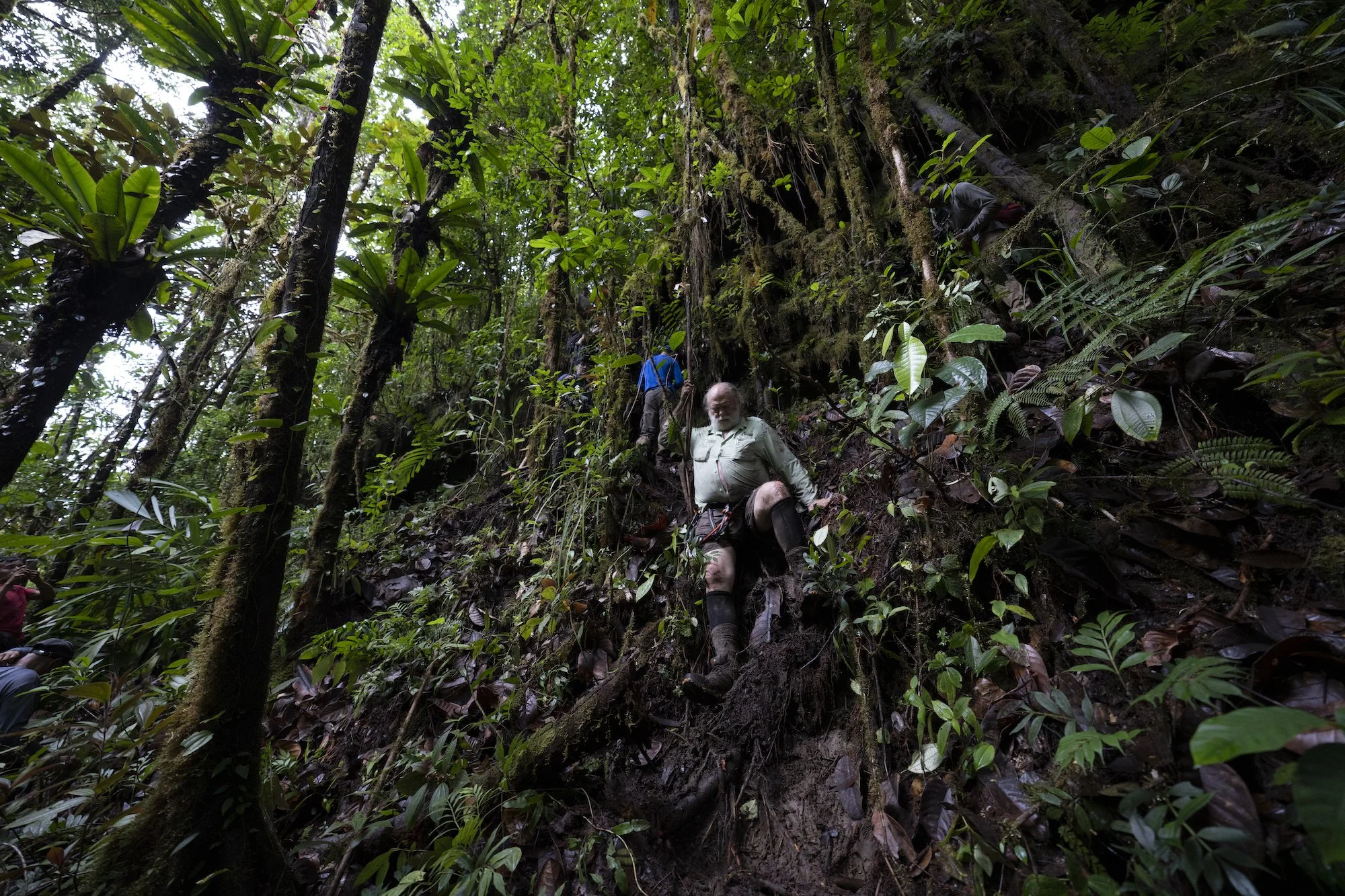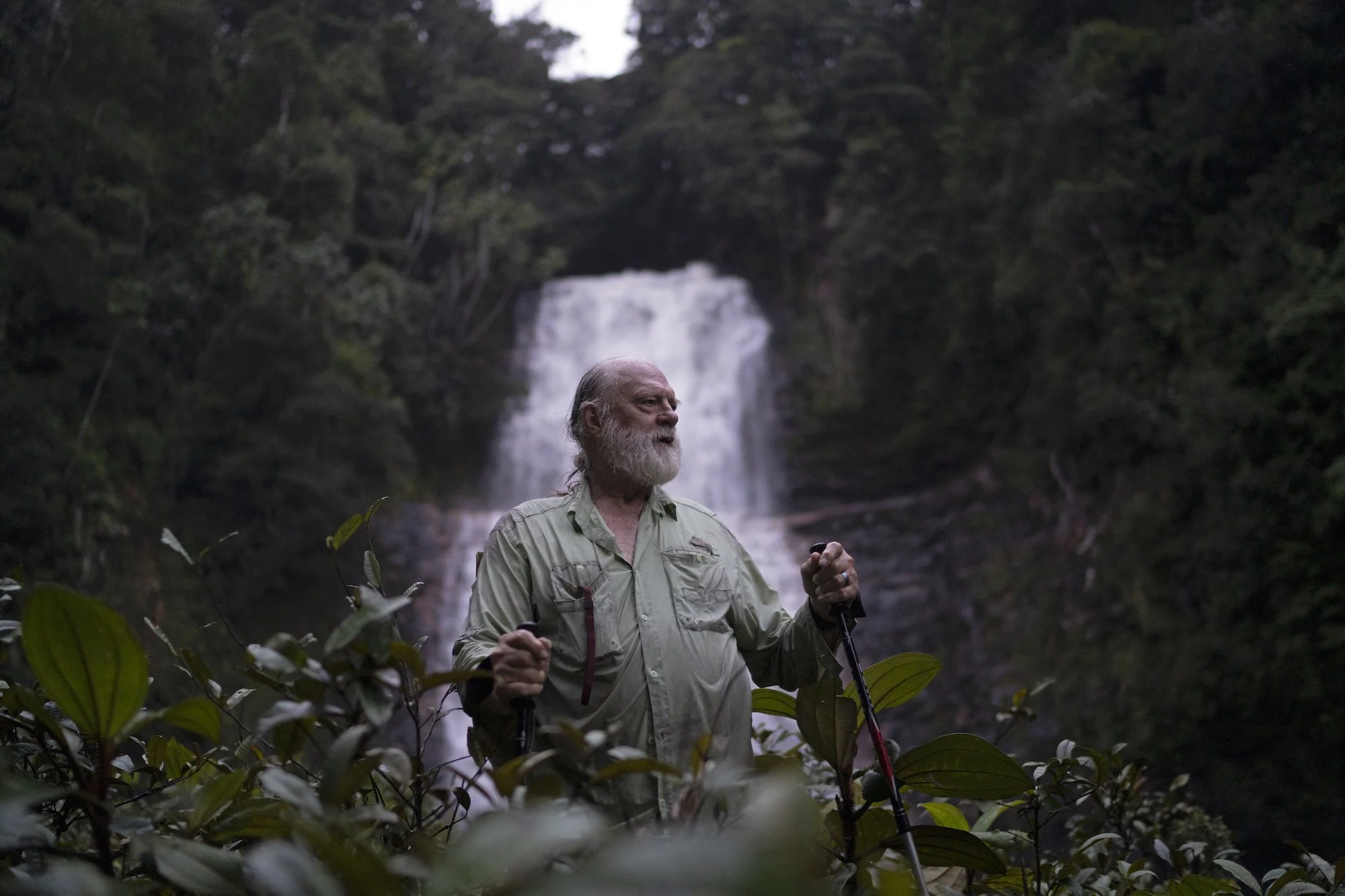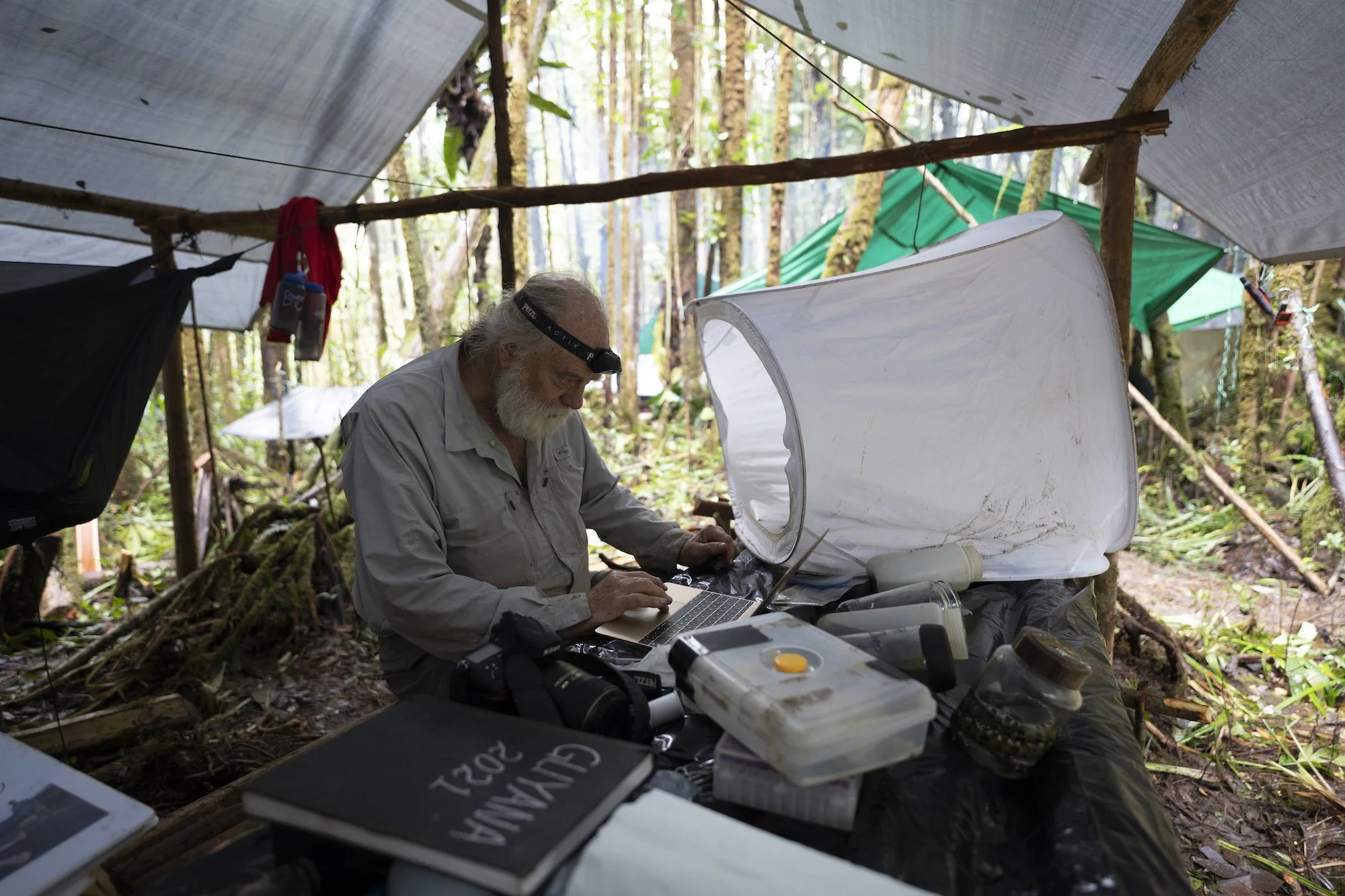The expedition had been planned well in advance. It would be arduous. It would be dangerous, possibly life-threatening. Elements of it had never been tried before. There were no guarantees. Free Solo climber Alex Honnold, National Geographic Explorer Mark Synnott and veteran field biologist Dr. Bruce Means would embark on a grueling expedition deep into the Amazon rainforest, examining rare plant and animal species along the way, only to reach Honnold’s final destination: the first-ever solo ascent climb of a 1000-foot sheer cliff to the summit of a tepui, a sprawling “island in the sky” straight out of Arthur Conan Doyle’s The Lost World.
Honnold, the first person to free-solo climb El Capitan in Yosemite National Park, has said he favours “tall, long routes” that he tries to do quickly. Honnold has confessed to having little natural ability and nowhere near as much strength as his peers growing up: His life’s philosophy, he says, is climbing and “following the weather.”
Honnold knew, though, that this time would be different. The Amazon does no one any favours. If he or anyone else on the expedition ran into trouble, they would be far away from rescue. Honnold has confessed to having little natural ability and nowhere near as much strength as his peers growing up: His life’s philosophy, he says, is climbing and “following the weather.” A sheer rock cliff in Guyana is not K2, but still: The weather is the weather. It plays by its own rules.
Bruce Means’ life work is similar and yet different — the only real connection is a shared affinity for the outdoors, a burning curiosity about what lies around the next jungle wall, and an abiding, all-consuming respect for life on Earth.
Means’ past projects range from a frog-collecting expedition to Guyana’s Mt. Roraima to radio-tracking eastern diamondback rattlesnakes in the high mesa. His life’s ambition — he is now 80 — is to uncover and document hidden biodiversity in some of the world’s oldest and least known, least explored hotspots.
The expedition, recounted in the Disney+ Earth Day special The Last Tepui, would enable Means to put a final coda on his life’s work, by scouring cliff walls in the heart of the Amazon rainforest for previously undiscovered species. Means had already established that tepuis are a secret garden of biodiversity, as important in their own way as the Galapagos Islands, and Earth Day would be the perfect day to reveal his findings, yay or nay, to the outside world.
Earth Day would also seem an ideal day for Honnold to share his climbing exploits to a wider audience than his followers in the climbing community and festivalgoers on the arthouse film circuit. The Last Tepui was produced under the aegis of the National Geographic Society, and is National Geographic’s cornerstone project for Earth Day.
As with any challenging expedition with many moving parts, contingency plans were drawn up for the unexpected. The unexpected, though, can be — well — unexpected. Hardly anyone could have been prepared for the SARS-CoV-2 pandemic in the spring of 2020. As with much of the outside world, Covid-19 took the expedition by surprise.
Last Tepui filmmaker Taylor Rees knew Covid-19 would be a concern, not only for those on the expedition but, more importantly, indigenous tribes and other locals the expeditioners might meet along the way.
“There was a lot of fear,” Rees told reporters in a teleconference call last month. “In terms of the Akawaio villages, moving through airports and travelling in-country, just knowing the risk of coming into contact with a community who might not have the medical resources we have. That meant quarantines at our end, and taking all the precautions necessary before stepping foot in the jungle.
“At the same time, I’ve heard from outside communities that I've worked with on other projects that the lack of tourism, the lack of travel, and the lack of collaborative storytelling can negatively impact them as well. We needed to find a balance between being as safe as possible but also not giving up on the project, and I think we managed that. The relationships and friendships you make, and the filmmaking collaborations around the world, are important.”
Identifying and then effecting Covid protocols ahead of time complicated an already complicated expedition, Honnold admitted, but it paid off in the end.
“Once we got through the initial Covid precautions of getting in-country, the expedition itself was so remote in the jungle that we didn’t have to worry about Covid,” Honnold said. “It was actually a bit of a shock when we came back to civilization a month later, having to put masks back on and go back to all those other precautions because we'd been so remote for so long. We had forgotten that a pandemic was even going on.”
Covid precautions notwithstanding, the expedition was no less arduous as a physical ordeal, Rees noted. “We had a fair amount of knowledge going into this,” she said. “We knew the challenges we were going to face. Nothing really can prepare you for that kind of remoteness, though. It was like wading through chocolate pudding essentially for 10 straight days of walking. We also had Bruce with us — he’s the reason we were all there, to support him on his swan-song of moving through remote landscapes and discovering new things. He’s 80-years-old and 300 pounds, so we were moving at his pace. By slowing down, we saw so much more than we would have otherwise.”
Rees paused, and then added with a wry smile, “And we did a lot more falling off slippery log bridges than we perhaps ever would have, too.”
Honnold said climbing a 1,000-foot sheer cliff to reach a botanical eden was a motivating factor, but that was not the only reason he was there.
“I was mostly motivated by my love of climbing,” Honnold recalled. “I was on the expedition because I wanted to climb tepuis that hadn't been climbed. It's a huge bonus, though, when we can do something that's actually useful for the world. And I think the opportunity to take Bruce Means into this area that he would otherwise have had great difficulty accessing was a tremendous rush. Yes, I’m still driven by the climbing, but it's definitely a bonus when you can do something useful.”
The Last Tepui streams on April 21 as part of Disney+’s day-long Earth Day programming.

